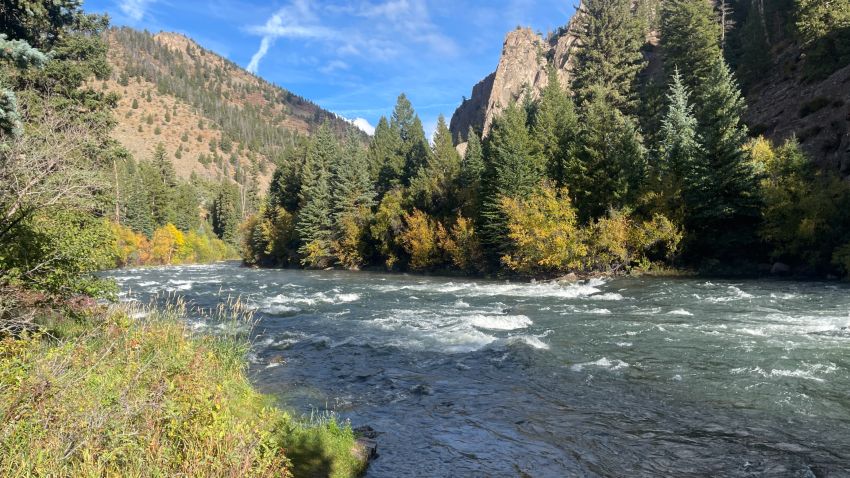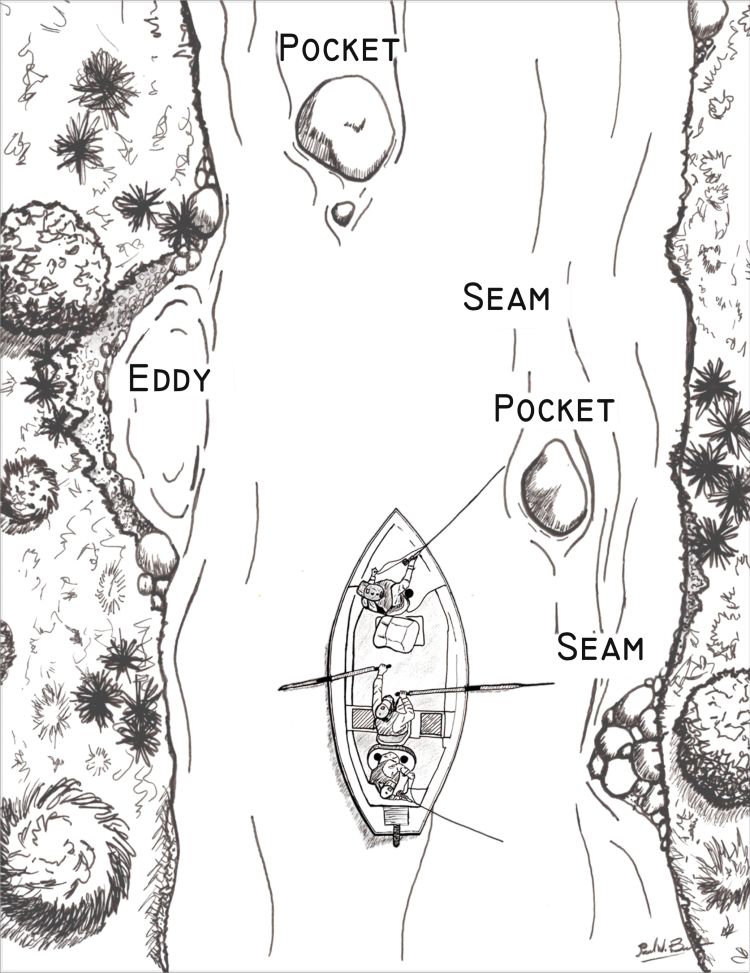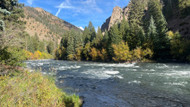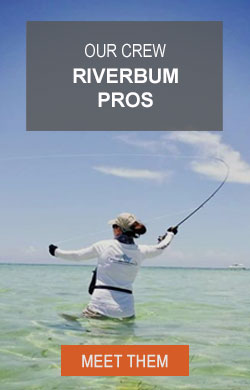Master The Art Of Reading The Water: A Guide's Perspective

Any luck? How many times do you get asked that question while you are out fishing? My response is simple; “No luck…. Just skill!” Fly fishing is more than casting a fly and hoping for a bite. Success on the water depends on several things going “right”: the right fly, the right depth, the right presentation and most importantly the right spot.
Understanding where fish are likely to hold and feed is a fundamental skill every angler must develop to be successful.
Today, I’m here to share a few insights I’ve picked up over years of guiding anglers on Colorado’s rivers.
Why Reading Water Matters
Fish aren’t randomly distributed in a river—they follow currents and seek out spots where they can rest, feed, and stay safe. And reading the water properly allows you to target these productive areas rather than casting aimlessly.
Below, we’ll go through some key areas to look for and discuss how to approach each one.
1. Riffles: The Fish’s Feeding Zone
What They Are: Riffles are shallow, fast-moving sections of the river where water tumbles over rocks and creates oxygen-rich currents. The bubbles and fast water can hide fish from predators, making these areas ideal feeding zones for trout.
What to Look For: When you spot a riffle, look for areas where fast water meets slower water, usually along the edges. Fish will sit here, letting the current bring food to them.
How to Fish It: In riffles, use a nymph or a dry fly that mimics insects caught in the current. Cast slightly upstream tight to the bank and let the bugs drift naturally with the current. Shorter rigs with weights will get you down into the feeding zone.
2. Runs: The Trout Highway
What They Are: Runs are deeper, consistent-flow areas following riffles, where the water slows down a bit but still flows steadily. These are like highways for fish, who use them to move between feeding and resting areas.
What to Look For: Look for the steady current in the middle of the run, especially where it slows slightly before entering deeper pools. Fish often hold here to rest and wait for food to drift by.
How to Fish It: Run a nymph rig or streamer through the run, covering different depths to locate where the fish are holding. A good strategy is to work your way upstream, covering each part of the run with your casts. Change out the depths and weights until you start getting takes.
3. Pools: The Fish’s Resting Spot
What They Are: Pools are deep, slow-moving sections of the river where fish rest. Pools usually form below waterfalls, bends, or obstacles like fallen logs or large rocks, and they offer fish shelter and protection from the current. Pools are great targets in the colder months.
What to Look For: Look for a deep area with slower-moving water, often dark in color because of the depth. You may also spot fish rising here, especially in the morning or evening.
How to Fish It: In pools, try a dry fly or emerger for fish rising near the surface. If there’s no surface activity, fish with a weighted nymph rig and let it drift slowly through the pool. This can often tempt fish lurking at the bottom.
4. Eddies: The Hidden Hotspots
What They Are: Eddies are areas where the current circles back, creating a calm pocket of water near fast-moving water. These spots often hold fish because they provide both rest and a steady supply of food swirling in from the main current.
What to Look For: Look along the edges of the main current and look for water going upstream. This is common, especially near large rocks or bends. You’ll notice swirling water where the fast and slow currents meet.
How to Fish It: Cast upstream from the eddy and let your fly drift naturally into the slower water. Eddies are ideal spots for both dry flies and nymphs, as fish tend to feed closer to the surface here.
5. Seams: The Intersection of Fast and Slow Water
What They Are: Seams are lines where fast and slow currents meet. Fish often hold in seams, as they can stay in the slower current while darting into the faster water to grab food.
What to Look For: Look for visible lines between fast and slow water--easily identified with a line a bubbles. These can often be seen alongside riffles, runs, or near obstacles.
How to Fish It: Cast just upstream of the seam and let your fly drift along the edge of the faster current. This technique allows you to cover both slow and fast water, maximizing your chances.

Putting It All Together
Learning to read water is all about practice and observation. Next time you’re out, take a few moments to study the water before casting. Notice how each section—riffles, runs, pools, eddies, and seams—have unique characteristics that attract fish. Start by targeting one type of water, and gradually build up your skills to read and fish all these areas effectively.
Good luck (even though there’s no such thing), tight lines, and remember to enjoy the journey as much as the catch!







